In one of the scenes frescoed by Giotto in the cycle of the Stories of St. Francis that adorns the walls of the Upper Basilica of St. Francis in Assisi, one can see the saint, kneeling in front of a kind of box, with a child in his hands: this is the episode of the Greccio crib, one of the most famous of the Assisi cycle. According to what the texts that have transmitted to us the life of St. Francis tell us, that is, first of all, the Life before Thomas of Celano (the oldest: it was composed between 1228 and 1230) and the Legenda maior of St. Francis (the biography of the Poor Man of Assisi written in Latin by Bonaventure of Bagnoregio at the commission of the Order of Friars Minor, and then approved by the general chapter of Pisa in 1263), the saint, on Christmas night of 1223, is said to have staged a representation of the Nativity for the inhabitants of Greccio, a village near Rieti, in front of Mount Terminillo. It was, in fact, the first nativity scene in history, recounted as follows in the Legenda (which basically traces the text of the Vita prima, in a more concise form): “It happened, in the third year before his death, that he arranged to celebrate the commemoration of the birth of the child Jesus, with the greatest possible solemnity, in order to arouse devotion in the castle of Greccio. But so that this would not be considered a rash act, he sought and obtained permission from the Supreme Pontiff. He thus had a stable prepared, hay brought in, and an ox and donkey brought to the site. The friars arrived, people flocked, the forest resounded with voices, and that venerable night became resplendent and solemn with abundant lights, solemn and sonorous with praise and harmony. The man of God stood before the manger, full of pity, sprinkled with tears, overflowing with joy. Solemn mass was celebrated over the manger, and Francis, Christ’s Levite, sang the holy gospel. Then he preached to the people around him, spoke of the birth of the poor king whom, in the tenderness of his love, he called ’the child of Bethlehem’ whenever he wished to name him.”
According to tradition, St. Francis was in Greccio as he was staying at the nearby hermitage of Fontecolombo, and he was also a friend of the lord of Greccio, Giovanni Velita, who, again according to the stories, was greatly touched by the saint’s story. It was precisely St. Francis, nara Tommaso da Celano, who is said to have asked Giovanni Velita to prepare for him the necessities for the representation, starting with the manger (in Latin praesepe: thus, literally, “crib” means precisely “manger”): the saint would mature the idea of setting up the nativity scene with the goal of seeing for himself the hardships Christ suffered when he came into the world, the way he found himself forced to sleep in a manger among an ox and a donkey, set up on top of hay. And Greccio became a kind of new Bethlehem. It seems that the town had been very participatory: everyone brought something according to their possibilities, everyone arrived at the place chosen by St. Francis with candles, tapers and torches to light the representation, the population was very happy. The Legenda maior also gives an account of a miraculous vision of John Velita, who allegedly claimed to have seen, just inside the manger, a beautiful sleeping child. The two texts are, moreover, ambiguous about the baby Jesus of the crib, and do not provide any information about it, but it is more than likely that, in the manger, St. Francis had simply placed an effigy of the Child, something similar to the famous Bambinello dell’Aracoeli, a 15th-century wooden sculpture preserved in Rome, in the basilica of Santa Maria in Aracoeli, the object of a very strong devotion. However, the text accompanying Giotto’s fresco, which reads as follows, could intervene to remove the doubt: “How blessed Francis, in remembrance of the Christmas of Christ, ordered the crib to be prepared, the hay to be brought, and the ox and donkey to be led; and he preached on the nativity of the poor King; and, while the holy man was holding his prayer, a horseman discerned the [true] Baby Jesus in place of the one the saint had brought.”

The depiction Giotto painted in the Basilica of Assisi, contrary to what one might think, is not the first ever depiction of the Greccio nativity episode. In fact, there are at least two illustrious precedents: in Florence, in the Basilica of Santa Croce, the Tavola Bardi, a work dated 1245-1250 and attributed to Coppo di Marcovaldo, is preserved, where the main elements of the story appear: the grotto where Francis set up the manger, the Child, the ox and the donkey, the friars, and the local people. Much more ruined, on the other hand, is the scene painted in the panel by Guido di Graziano kept at the Pinacoteca Nazionale di Siena, which is chronologically later (dating perhaps from the 1770s or 1880s): the scene is nevertheless easily distinguishable.
Giotto offers to the relative a rather faithful interpretation with respect to Bonaventure of Bagnoregio’s account, despite the fact, we see, that the scene is set in front of the presbytery of a church, similar moreover to that of the Lower Basilica of Assisi, and not in the grotto where according to tradition St. Francis is said to have given life to his representation. The saint is kneeling, he is arranging the child representing Jesus in the manger (or he is embracing the real baby Jesus of the miracle described in the Legenda maior), and to the side we see, albeit on a smaller scale than in real life, the ox and the donkey. On the right, his brethren arranged below a ciborium similar to those of Arnolfo di Cambio (e.g., the one in Santa Cecilia in Trastevere or the one in San Paolo Fuori le Mura in Rome, which Giotto must surely have seen during his stay in the city) are captured singing while following the text on the book arranged above the badalone (the large wooden lectern) in the center of the composition, while further back a crowd of onlookers observes the scene. On the left, the man spreading his arms in astonishment has been identified as Giovanni Velita himself. Above the partition, i.e., the wall-like structure that divided the choir from the part where the faithful stood instead, we see a cross, from behind (the painted part was in fact facing the faithful: usually, in churches of the time, crosses were not hung from the ceiling as we see them today, but were raised like this, above the partition), and beyond the structure we observe instead the case of a pulpit.
The scene is distinguished by its striking realism: the characters are arranged on different planes in a believable way, and we note Giotto’s commitment to rendering the expressions of the participants, the minuteness of detail, and the intuitive but essentially correct placement of objects in space. It is precisely the perspective space, acutely investigated by the artist, that represents one of the main reasons for the scene’s interest, since it reveals the artist’s strong interest in issues related to architecture and space (art historian Valerio Mariani has said that the scene of the Greccio Nativity scene “assumes a summarizing and almost exemplary value for the problems related to Giotto’s interest in architecture”). And the unusual viewpoint, from the chancel, makes the composition even more surprising. “This scene,” Luciano Bellosi has written, “should be admired above all for the boldness and novelty of its ambient solution. We are plunged directly into the interior of a church, on the side of the chancel, this side of the chancel transenna, on which rests a painted cross that is not a sacred image but an object, the back of which can be seen only, tilted toward the nave and stopped to a beam by a rope. We can see the back of a marble pulpit, the back of the wooden badalone for the choir books, the beautiful Arnolfo ciborium above the altar, with its terracotta sliver canopy and white marble ribs, evoking the solution adopted by Brunelleschi for the dome of Florence Cathedral, almost certainly already envisioned by Arnolfo di Cambio. Such an extraordinary setting of an interior, of which the furnishings but not the walls can be seen, already corresponds to the solutions adopted by Giotto in Padua when he depicts the interior of the Temple of Jerusalem in the scenes of the Expulsion of Joachim and the Presentations of Mary and Jesus, and constitutes an unparalleled document of the appearance of the interior of a church in Giotto’s time and its liturgical functionality.”

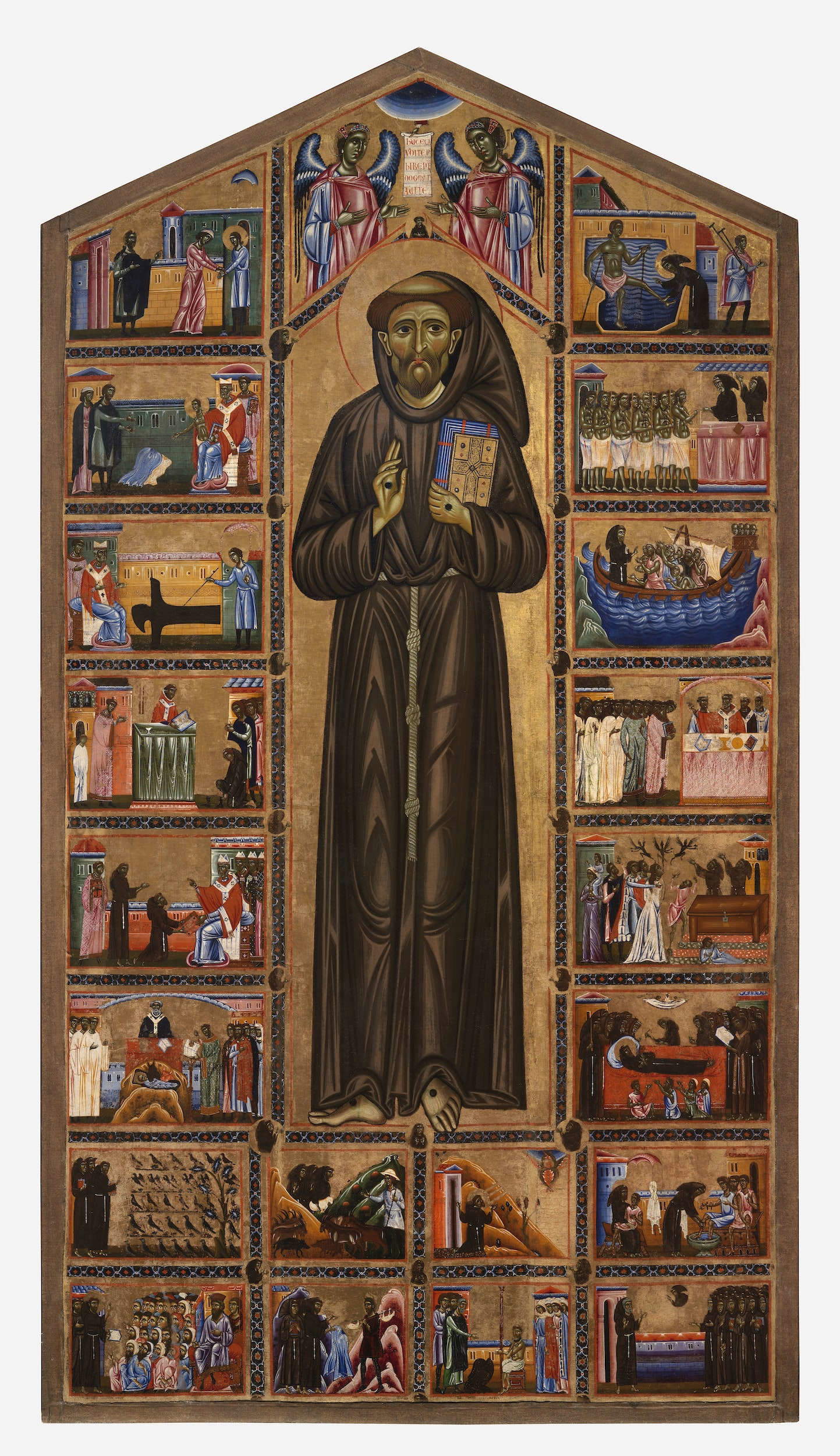
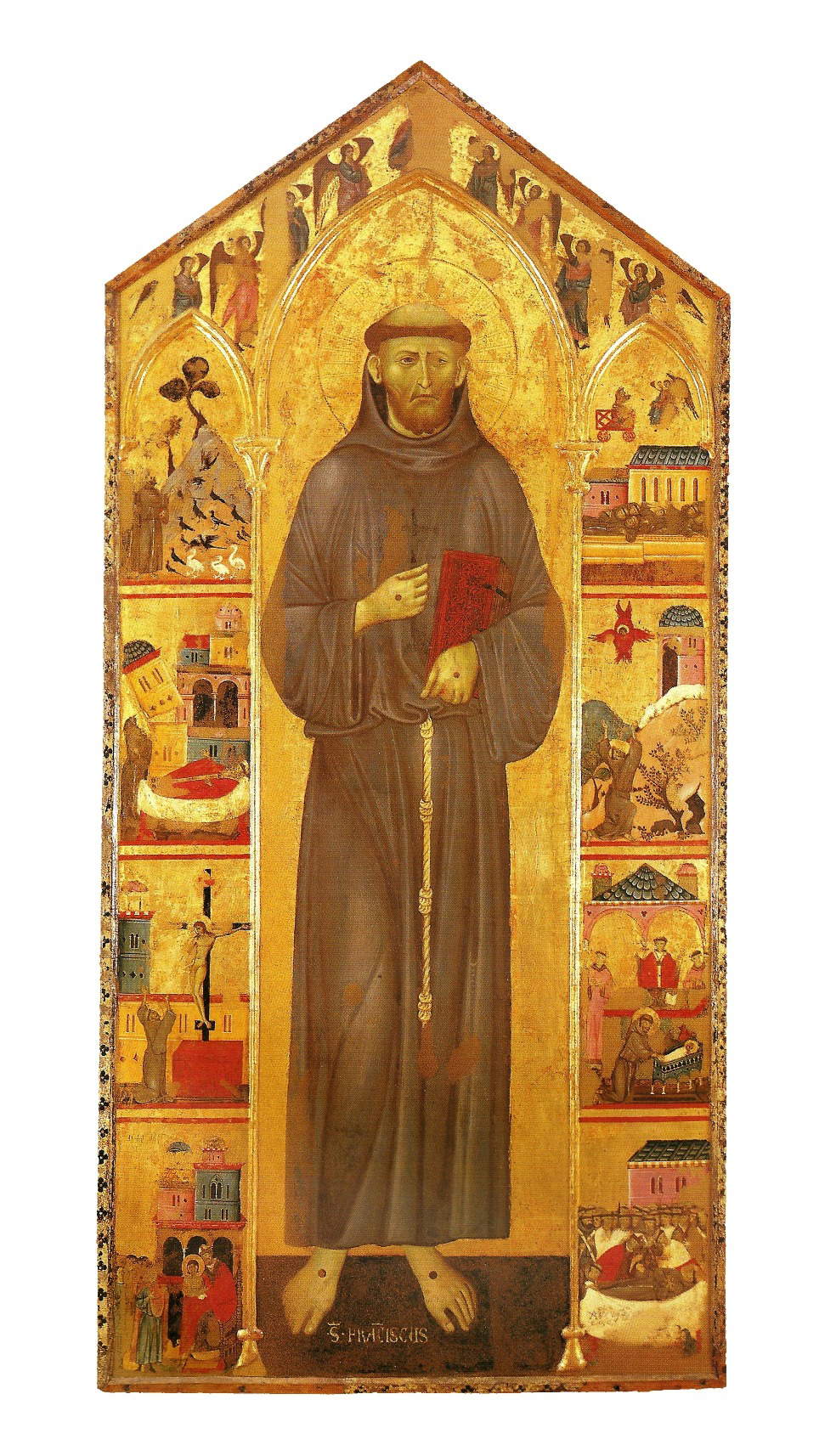
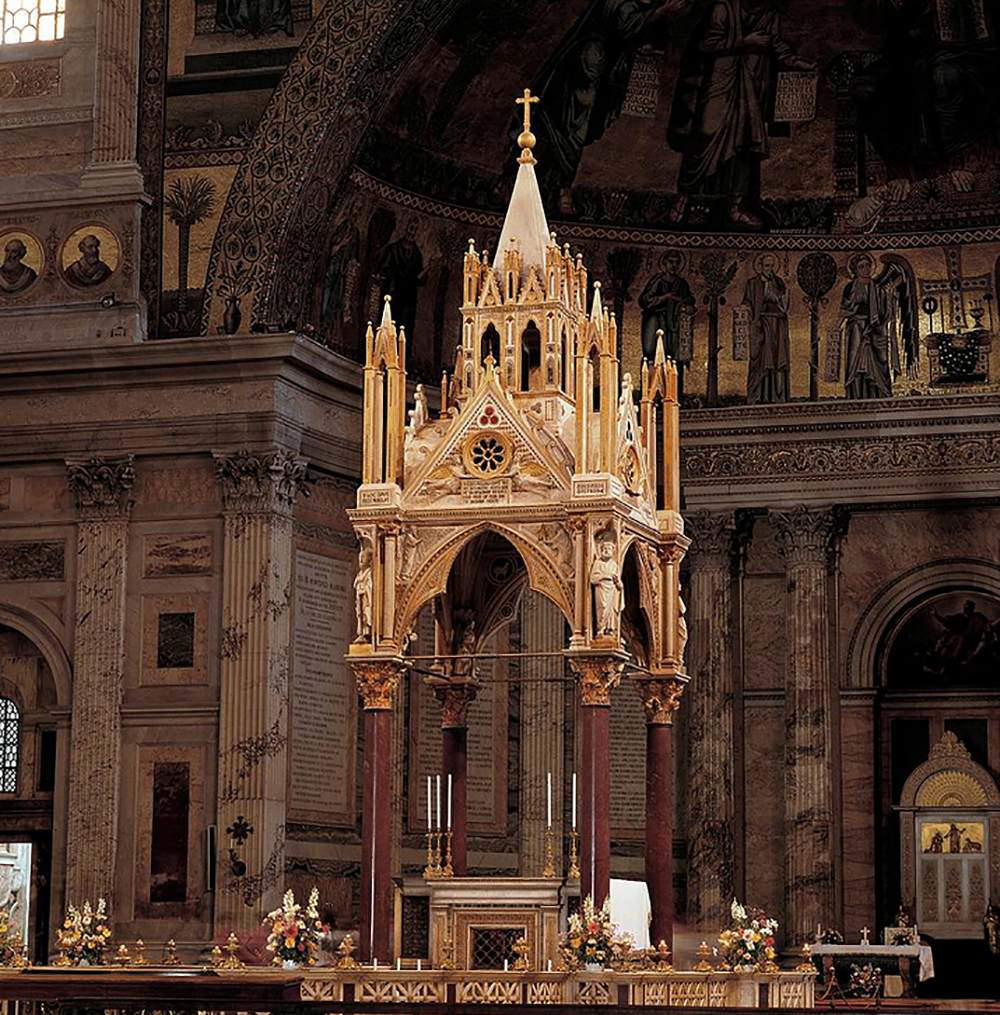

Even one of the finest historians of medieval art of the twentieth century, Pietro Toesca, has emphasized the profound innovations witnessed in this scene, which shows us an extremely free and experimental Giotto, a painter who, Toesca writes, in the Assisi frescoes “has no difficulty whatsoever in moving the action intricately, throughout the depth of the scenery, feeling himself bound by no other rule of composition than the will to compose widely provided that he always frees the major lines so as to render simple, distinct in broad parties, even the most crowded scenes,” and the scene of the Greccio Nativity is precisely a demonstration of the “genius of the artist in composing.” The scene of the “theatrical” representation, so to speak, of Christmas Eve, writes Toesca, “is depicted with a variety of movements and groups of figures, yet everything converges there where the Saint in a maternal act lays in the manger the Child who to some of the onlookers seemed to be Jesus himself. Among the free diversity of voices and acts there is full harmony; over all the architecture more clearly establishes the orderly balance: in the whole it is already, by virtue of a great master, the complex of contrasts and correspondences that will be the norm of the greatest Florentine fresco painters of the Renaissance.” Playing a central role in the composition is the church partition itself, not only because it separates the different registers of the scene, but also because it is able to give movement: “its proportional marble panels,” writes Toesca, "have that function of rhythm that Giotto adopted in Santa Croce in Florence, closing with a partition the background of the Esequie di S. Francis, and which Masaccio repeated in the Brancacci Chapel, in the Resurrection of the King’s Son." As for the perspective composition, traced “rather with the guidance of the eye than on scientific research,” it is very complex despite its apparent simplicity: “on this side of the partition, which forms the iconostasis, it clearly defines the presbytery of the church with the altar and with the ciborium [...], with the lectern whose articulated structure is specified in detail by a play of illusion.”
It has been said, then, of the artistic significance: but what instead is the religious significance of the crib? In other words: why did it occur to St. Francis to set up a true re-enactment of the nativity, the first nativity scene in history? On the one hand, it is necessary to give credence to the Legenda maior at the moment when Bonaventure of Bagnoregio emphasizes that the nativity scene representation served “ad devotionem excitandam,” that is, to arouse devotion in the faithful: offering the inhabitants of Greccio a kind of concrete visualization of the hardship that the Child had to face when he came into the world had a persuasive power certainly higher than that of words. It will then be necessary to consider that, at that time, Francis was inflamed with a strong mystical fervor, as Thomas of Celano himself recounts in the introductory lines of the chapter on the Greccio crib in the Vita prima: “His highest aspiration, his prevailing desire, his firmest will was to observe perfectly and always the holy Gospel and to imitate faithfully with all vigilance, with all commitment, with all impetus of soul and heart the doctrine and examples of our Lord Jesus Christ.” But there were also deeper reasons. Meanwhile, Franciscans cultivated a strong devotion to the Child Jesus (in the church of San Damiano in Assisi, one can see a fresco in which St. Clare and her sisters pray before a niche with a depiction of the Child: the scene evokes an episode in St. Clare’s life, when she actually found herself praying to the Child Jesus to save the convent from the Saracens who were threatening it). What’s more, the moment of the Nativity was considered by St. Francis to be the first chapter of salvation history, and consequently played a central role in his Christian vision.

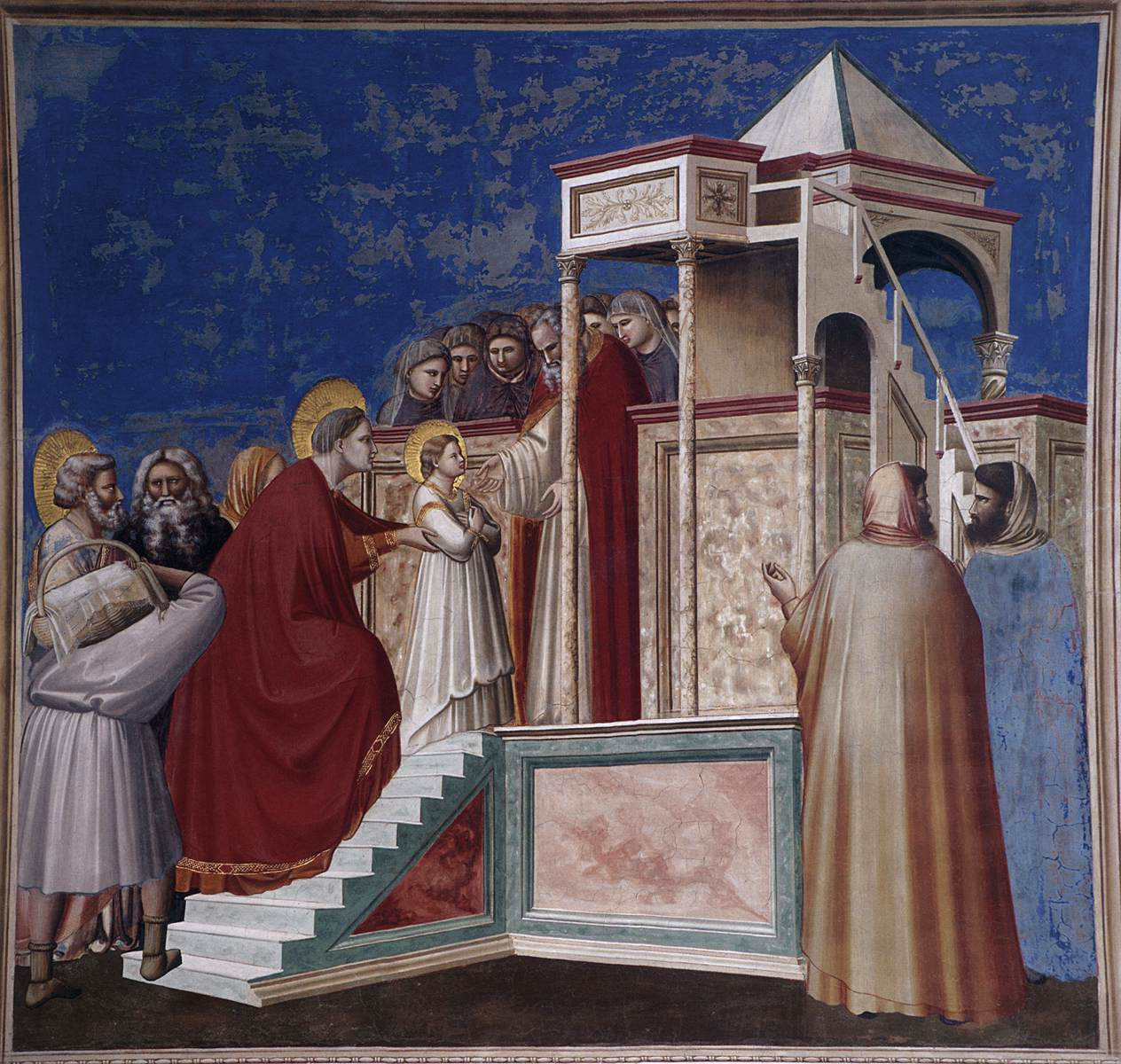

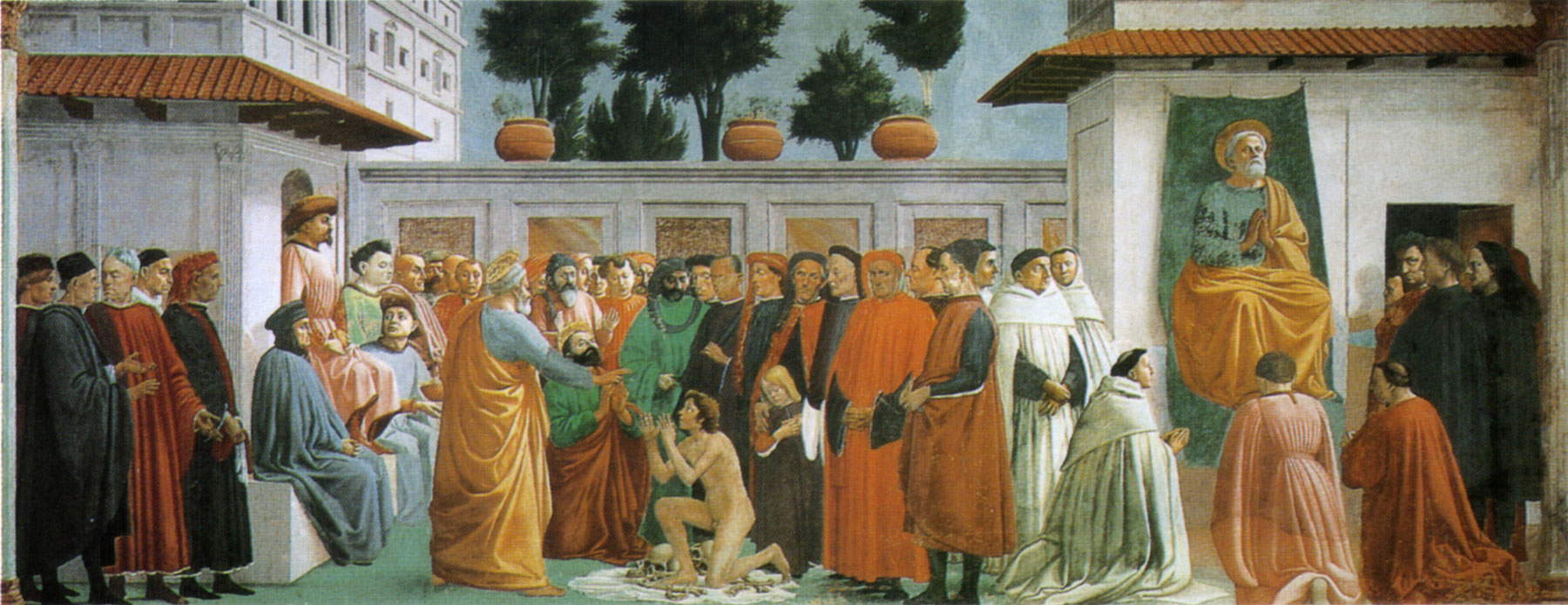
Then there were practical reasons. Historian Chiara Frugoni put forward the hypothesis that St. Francis had invented the crib to offer the faithful an alternative to the pilgrimage to Bethlehem: this is, in essence, the same principle that led to the birth of the sacred shrines that can still be visited on Italian soil today (mainly in the Alps, but also in Tuscany, where St. Vivaldo’s Jerusalem is located: these were shrines made up of groups of chapels that sought to reproduce the layout of the buildings in the holy city in order to save pilgrims the journey to Galilee). However, the hypothesis has been challenged by scholar Mary Dzon, who believes instead that the idea of the nativity scene as a means of strengthening the faith of Christians and “reiterating the belief that Jesus is incarnate on the altar during Mass” is more likely. And by establishing a comparison between the nativity scene and the Eucharist, Francis, Dzon writes, “emphasizes the continuous presence of the Lord, which is also a perpetual manifestation of his humility.”
St. Francis’ living nativity scene, however, is not the first sacred representation in the history of Christianity: for at least his centuries, especially at Easter, the custom of bringing to life the re-enactment of episodes from the life of Christ had been widespread, especially in the conventual setting. The saint of Assisi may have been inspired by these representations, although, wrote Erwin Rosenthal, “the staging of Greccio cannot be called a ’liturgical drama,’ although it has in common with ’sacred representations’ the intention of making the legend materialize, of transporting it into living images.” Rather, St. Francis may have been inspired by the custom of the midnight mass, which traditionally would have been celebrated for the first time in the West at the basilica of Santa Maria Maggiore in Rome, and would have continued to be celebrated from there for centuries: in St. Francis’ time, the midnight mass at Santa Maria Maggiore was a well-known and important event, not least because the relics of the manger are found in the Roman basilica, and pilgrims would go there especially to venerate them. In St. Francis’ nativity scene, however, there was no dialogue, no action, no movement, and no music. Only an emphasis on the conditions under which Jesus Christ was born. St. Francis had not invented anything particularly innovative, since Christmas had already been celebrated for centuries, there were those who preached about the suffering of the Child, there were even those who went to St. Mary Major to reverence the relics in the manger. Yet, St. Francis managed to merge all these traditions, giving them a new vitality. Besides, the true originality of the nativity scene, as Chiara Frugoni again pointed out, lies in the ideal of peace and brotherhood that underpins St. Francis’ invention and is expressed on a symbolic level. The hay represents the word of Jesus, on which the ox and the donkey feed, a symbol of opposition, of different peoples who, however, find themselves reunited in the face of the peace brought by Christ, at a time of wars and crusades. “Just as Christ began with the poor fishermen and gradually his message spread,” Frugoni wrote, “Francis also felt he had to reawaken the message of the Gospel and take it everywhere: a message of peace felt as something so absurd for the time, that someone in front of Francis and his people would run away, taking them for fools.” The first nativity scene in history was not only all devoted to simplicity, in full “Franciscan style,” we might say, but was also animated by a strong character of political valence.
Warning: the translation into English of the original Italian article was created using automatic tools. We undertake to review all articles, but we do not guarantee the total absence of inaccuracies in the translation due to the program. You can find the original by clicking on the ITA button. If you find any mistake,please contact us.